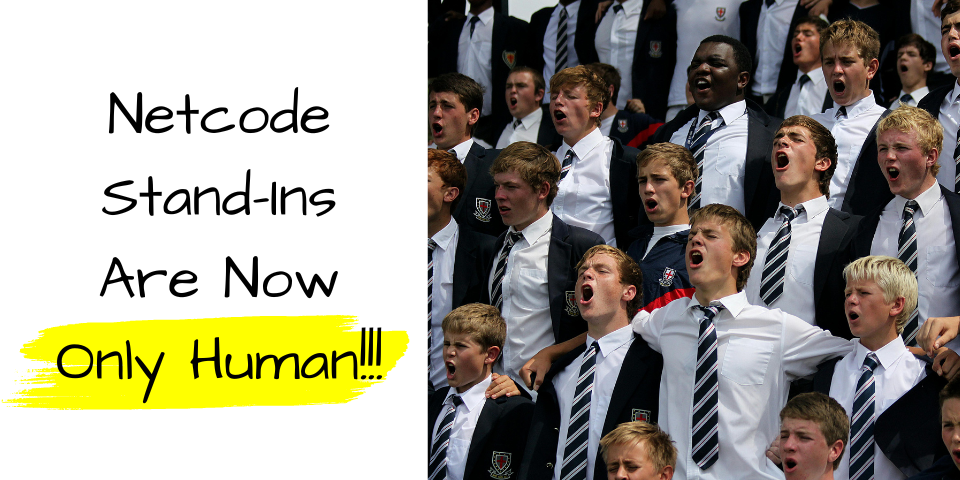Last week’s haiku was “stand-ins are humans.”
Although that might seem like a tautology, it wasn’t until this summer when SAG-AFTRA negotiated the 2024 one-year extension to the Network Television Code (Netcode) that stand-ins working under that contract were required to be human.
What the Netcode Now States
Near the end of the memorandum of agreement (MOA), SAG-AFTRA negotiated with its bargaining opponent (collectively known as “the Networks”) the following passage:
The parties acknowledge that the terms “stand-in” and “dance-in” as used in the Code include only humans.
This sentence appears in a new subparagraph to be added to Paragraph 36 of the Netcode, having to deal with digital replication and alteration of stand-ins and dance-ins.
Paragraph 36 defines the terms “stand-in” and “dance-in.”
Paragraph 36 begins, “Stand-ins and/or dance-ins are defined as those performers who are engaged by the company to substitute for members of the cast during rehearsal.”
Why Is This Clarification Important?
Why is this clarification an important breakthrough for stand-ins?
In other major contracts SAG-AFTRA recently negotiated, with respect to stand-ins, SAG-AFTRA did not achieve an agreement with their bargaining opponent that stand-ins were “only humans.”
Humanity became an important topic in those negotiations, because they were the first major negotiations in which SAG-AFTRA partook amid the rise of artificial intelligence and the rise of controversy on whether the new technology may rob unit workers of work days and compensation.
There were entertainment-industry discussions about language requiring that certain unit workers be humans and/or persons. For example, under Paragraph 25 of their MOA (p. 68), the Writers Guild of America achieved clarity that writers were persons and that artificial intelligence was not a person and so could not be a “writer” under their contract:
The Companies agree that because neither traditional AI nor GAI is a person, neither is a ‘writer’ or ‘professional writer’ as defined in Articles 1.B.1.a., 1.B.1.b., 1.C.1.a. and 1.C.1.b. of this MBA, and, therefore, written material produced by traditional AI or GAI shall not be considered literary material under this or any prior MBA.
Implications of Requiring Stand-Ins to Be Only Humans
With stand-ins now defined as “only humans,” there seems to be some job protection for stand-ins under the Netcode in the event of artificial intelligence and related technology. However, it will be interesting to see how this contract language actually plays out in the field.
Although the agreement that stand-ins are “only humans” comes out of the context of negotiations around artificial intelligence, a careful read of the negotiated language ensures the protection is not merely around artificial intelligence.
The passage states, emphasis added, “The parties acknowledge that the terms ‘stand-in’ and ‘dance-in’ as used in the Code include only humans.” So, the language is not that stand-ins must only be humans when it comes to artificial intelligence or digital replication and alteration, but must be only humans with respect to all stand-in work under the Netcode.
If you have followed Stand-In Central for a long time, you may recall the 2016 article on the StandInBaby™ product, in which Stand-In Central asked whether mannequins like the StandInBaby™ were a “threat” to stand-in work. More generally, the question is whether the use of a prop instead of a human stand-in was a problem. Stand-In Central asked then:
If it weren’t a StandInBaby™ but instead a StandInAdult that was used in place of an actor, would the union have cause for concern? Would you have cause for concern if you lost your stand-in job to a mannequin?
Given the new language, it would seem there is reason to believe that if a Netcode production uses a mannequin or prop as a stand-in “as a substitute for [a] member[] of the cast during rehearsal” rather than a human, then that production would be in violation of the Netcode, even if there was no use of artificial intelligence.
So, if a union infant is working, and if a production does not hire a human as the stand-in for that infant during rehearsals and uses a doll instead of a human, on its face, that practice would now be in violation of the 2024 Netcode.
But not just babies! During rehearsals, if there are mannequins on set, or dummies, or some other kind of inanimate substitute for a member of the cast and not a human substitute, that could be a violation of the Netcode as well.
Why that matters is that, in these situations, a production gets around paying for a stand-in — meaning a loss of work for a stand-in, a loss of funds for SAG-AFTRA’s benefit plans, and maybe even a loss of work for you.
Conclusion
It may seem like a little victory, but with the victory, the achievement that Netcode stand-ins are “only humans” should mean job protections for Netcode stand-ins in an era or artificial intelligence.
Extra points to you if you are able to secure more work or get a production in trouble for not using a human stand-in and instead using something not human!
Do you see how this new Netcode language protects stand-in work? Have you worked on a job that used a doll or mannequin as a stand-in instead of a human? Post your perspectives in the comments box below!







Leave A Comment